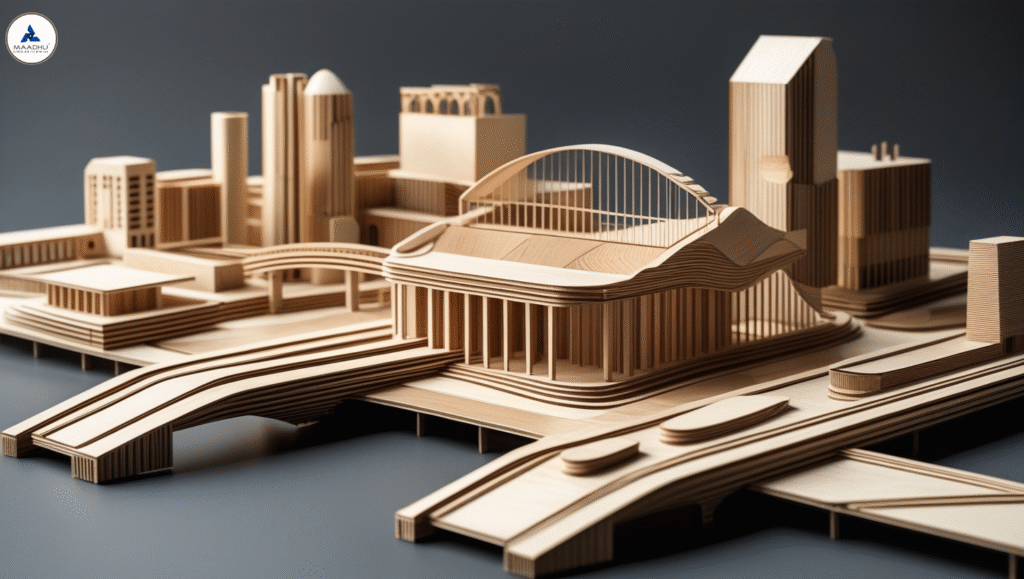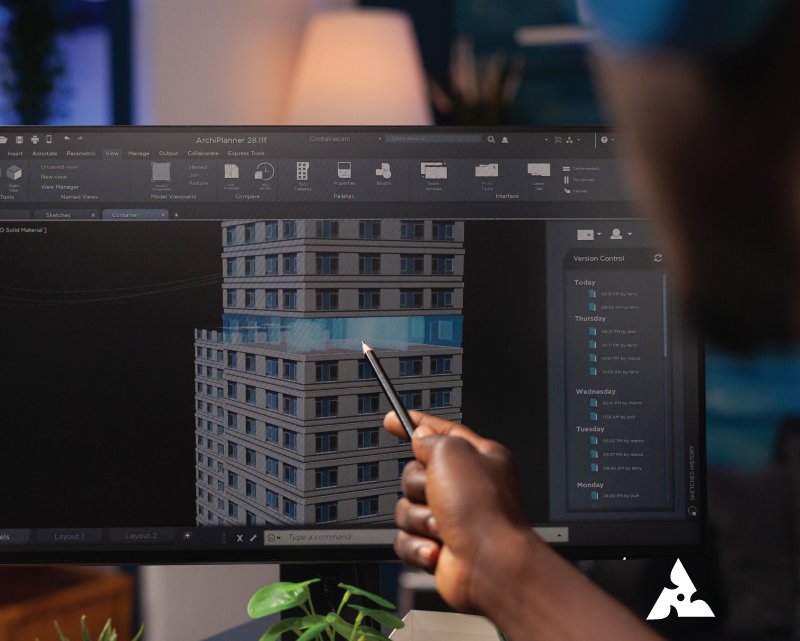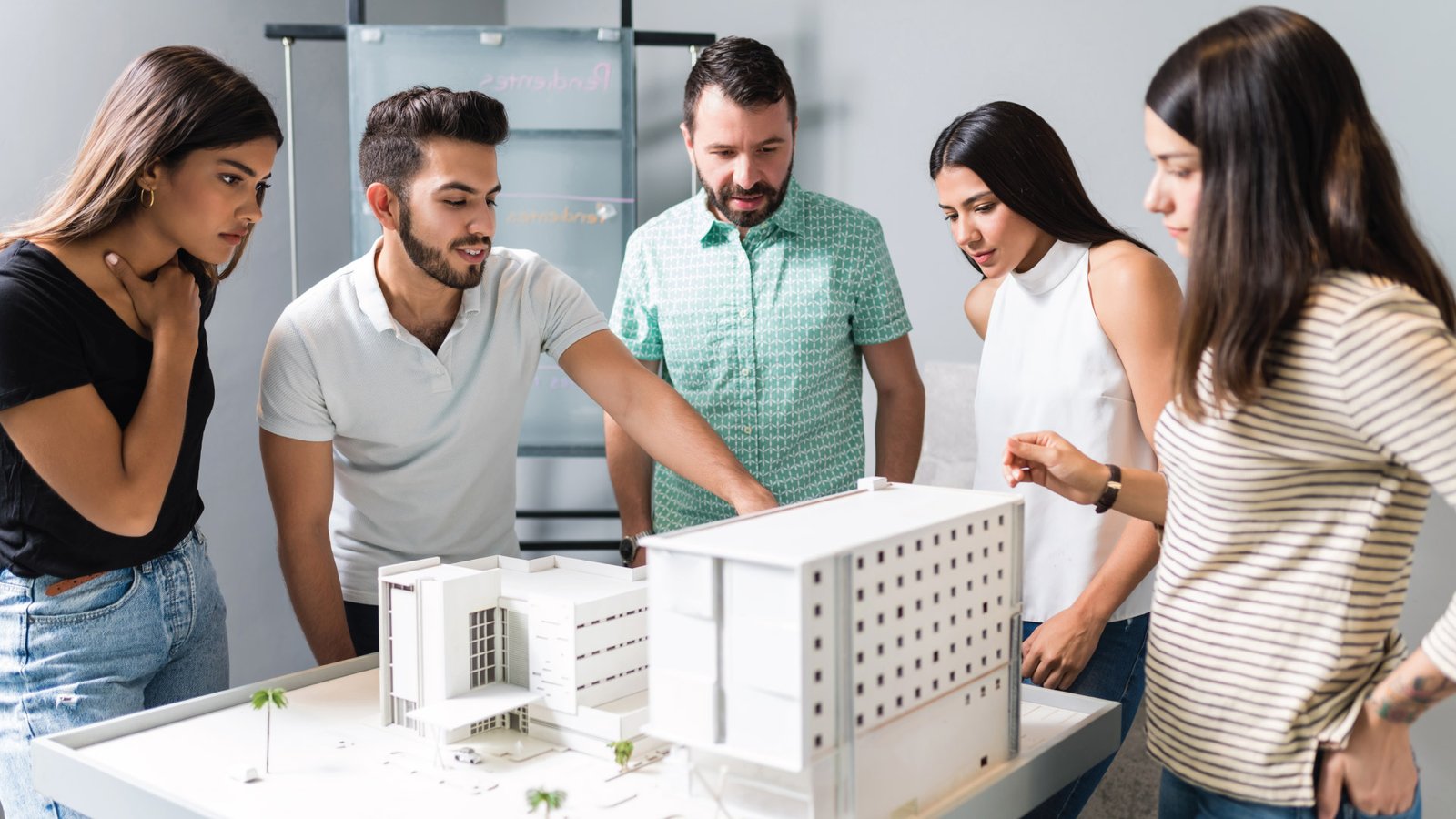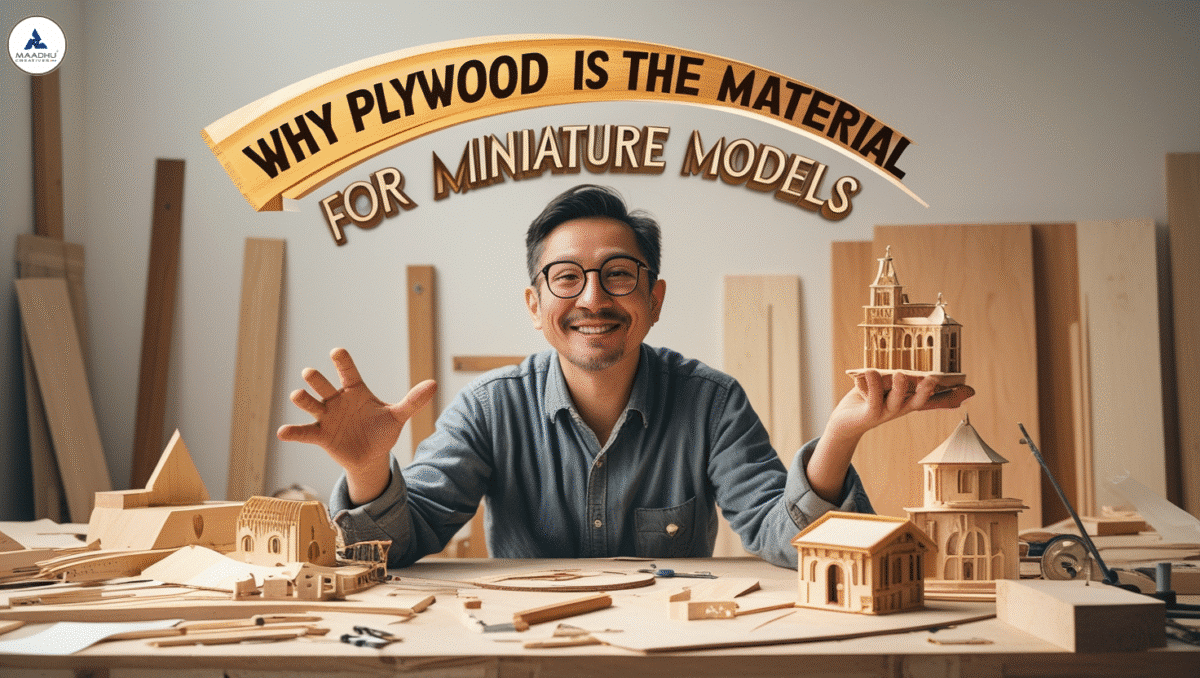Why Plywood Is the Best Material for Miniature Models
Table of Contents
When it comes to architectural model making materials, the choice of materials can highly influence the end results of your miniature model. To the professional, the student, and even the aficionado pretending to be an architect, the materials must protect your work while still being easy to use and giving realistic finishes. A variety of model making materials emerges out of the collaborative mind of manufacturers, but if you experience an, ah-ha moment with one material, it is plywood for model making.
Plywood encompasses great strength, versatility, and interesting finishes that make it an ideal material for architecture model making. Reasonably priced and easy to find, the material makes sense for model making. In this blog, we will explore the reasons why you should be using plywood for architectural models, how to work with it, and the tips that will help you be better at making models.
Why Plywood Is the Perfect Choice for Architectural Model Materials

1. Durability and Strong Structure: A Long-Lasting Option
When creating architectural models, one important factor is durability. Architectural models can handle a lot, especially if displayed at exhibitions, presentations, or meetings. For these reasons, plywood for architectural models gives you the strength and durability to allow your architectural models to remain intact.
Plywood has a strength and durability like no other, especially compared to foam, cardboard, or certain plastics, especially with climate change. Plywood will not warp, bend, or crack when to climate variations in the form of heat and humidity. Plywood for model making is very strong, ensuring your models are going to keep their shapes and integrity in the long term. This strong durability is important in countries like India, where humidity and changing temperatures affect the life of other materials. You are assured that your plywood architectural model will keep that integrity, even when being handled frequently.
2. Precision Cutting and Detailing
In architectural model making, precision is key. You need clean, accurate cuts to ensure that your model looks sharp and professional. Plywood for model making allows you to achieve this level of precision. With the right model making tools, such as hobby knives, saws, or laser cutters, you can make extremely fine cuts, achieving the level of detail required for architectural models.
The smoothness of plywood also makes it ideal for adding intricate details. It can be easily sanded, shaped, and carved into various forms to replicate fine features such as window panes, door frames, facades, and more. Whether you’re working on modern buildings or historical structures, plywood for architectural models provides the perfect foundation for detailed, realistic designs.
3. Versatility with Thickness Options
One of the standout features of plywood is its variety of thicknesses. Plywood for model making is available in thin sheets for delicate, detailed work as well as thicker sheets for structural elements. You can choose the appropriate thickness based on the complexity of your model.
For example, you can use thinner plywood sheets for small architectural features like doors, windows, and railings, while opting for thicker sheets for larger components like walls, roofs, and floors. This versatility ensures that you can create a build miniature model with different levels of strength and detail where necessary.
4. Lightweight Yet Strong
Despite its incredible strength, plywood for architectural models is relatively lightweight. This is a key benefit for architectural models, especially when creating larger or multi-story structures. The lightweight nature of plywood ensures that your model can be easily transported or displayed without sacrificing strength or structural integrity.
In comparison to heavier materials like metal or solid wood, plywood gives you the strength you need while keeping your model manageable and portable. This makes plywood an excellent option for exhibitions or presentations where you may need to move your miniature models from one place to another.
5. Realistic Finish and Texture
Plywood offers a unique advantage when it comes to realism in architectural model making. Its natural wood grain texture can be used to replicate real-world materials such as wood, stone, or concrete, adding a level of authenticity to your build miniature models. Whether you’re trying to mimic a modern office building or a traditional cottage, plywood’s grain and surface texture allow you to achieve the desired look.
Moreover, plywood is easy to paint, stain, or varnish, giving you the flexibility to alter its appearance to match the materials you are replicating. By experimenting with different finishes, you can achieve a range of effects that bring your architecture model making projects to life.
6. Affordability: High-Quality Without Breaking the Bank
One of the primary concerns for many model makers, especially students or hobbyists, is cost. Fortunately, plywood for architectural models is affordable and widely available. It is much less expensive than materials like acrylic, metal, or certain types of foam, making it a cost-effective option without sacrificing quality.
In India, plywood is easily accessible at hardware stores, model-making shops, or online retailers. The affordability and availability of plywood make it a great choice for anyone looking to build miniature models on a budget.
7. Sustainability: An Environmentally Friendly Option
In today’s world, sustainability is a significant concern, and many architects and model makers are choosing eco-friendly materials. Plywood for model making is an environmentally friendly option, especially when sourced from responsibly managed forests. It’s made from layers of thin wood veneers, bonded together using non-toxic adhesives. Many suppliers now offer plywood for architectural models with certifications indicating that the wood is sourced from sustainable forests.
By choosing plywood, you’re not only ensuring that your miniature models are strong and beautiful, but you’re also making an environmentally responsible choice.
How to Work with Plywood for Architectural Models

While plywood for model making offers numerous benefits, working with it effectively requires the right tools and techniques. Here’s a guide to help you create stunning architectural models with plywood:
1. Use the Right Model Making Tools
To get the best results, it’s crucial to use the right tools. A sharp hobby knife, fine saw, or rotary cutter works well for cutting through thin sheets of plywood. For thicker pieces, a jigsaw or fine-toothed saw is ideal. These tools will help you achieve clean, precise cuts necessary for architectural models.
Additionally, sandpaper or a sanding block will help smooth out any rough edges after cutting. For gluing, use a strong wood glue that dries clear to avoid visible marks or residue on your finished model.
2. Smooth and Finish the Surface
After cutting your plywood pieces, it’s important to sand down the edges to prevent rough or splintered surfaces. This ensures that the pieces fit well together and creates a smooth surface for painting or staining. Sanding also eliminates any excess glue or debris that may have accumulated during the construction process.
Once the edges are smooth, you can apply stains, paints, or varnishes to achieve your desired finish. Whether you want a natural wood appearance or a painted surface, plywood for architectural models can be easily customized to suit your vision.
3. Layering for Depth and Detail
Layering plywood is a wonderful way to give depth and dimension to your architectural model, particularly textured facades or multi-story buildings. Almost endless depth can be achieved simply by layering thinner sheets of plywood on top of each other.
For instance, you could use one thicker sheet for the bottom of your architectural model, then layer thin sheets you cut out for significant architectural elements, like windows, doors, roofs. Layering will give your models a new layer of depth and sophistication.
4. Adding Small Details
Paying special attention to details is a vital skill in architectural model making. You can use some of the model-making tools to cut fine details into the plywood. Little things like individual window panes, a door handle, or trim work can be added using small pieces of plywood or by carving details in other ways.
The little details you put on your model will add another level of realism to your model. The more attention to detail you put into the less significant aspects of your design, the more professional and realistic your final project will look.
Expert Tips from Maadhu Creatives Miniature Models

Maadhu Creatives, one of the leaders in architectural model making, provides exemplary advice on how to make your models as realistic as possible. Here are some suggestions for enhancing your model-making technique:
1. Test Under Different Lighting
Model detail will drastically change based on the light that is cast upon it. Therefore, when building your model, you will want to see how the shadows and light will play off the surface under different lighting conditions. Testing will also give you knowledge of any model area that may require extra detail, in order to create the most realistic-looking effect.
2. Pay Attention to Scale and Proportions
Ensuring perfect scale and proportions is one of the most vital aspects of architectural model making. Even the slightest variance in detail can create a model that does not look real at all. Use materials that provide accuracy with regard to measurements and size.
3. Focus on Small, Unique Details
The attention to the unique miniature features are very important to the project. A special feature like window shutters or other forms of moulding or minor architectural details could create an impact to make your mini models look unique. These details also help to add character and realism to the model.
Conclusion: Why Plywood Is the Ultimate Material for Architectural Models
Plywood for model making offers an unbeatable combination of durability, versatility, and affordability, making it the ideal choice for creating architectural models. Its strength ensures that your models last, while its versatility allows you to experiment with different techniques and finishes to achieve the most realistic results.
Whether you’re a student, professional, or hobbyist, plywood is an accessible and effective material for any miniature build project. With the right tools and techniques, you can create beautiful, realistic models that stand the test of time.
FAQs
Plywood is strong, versatile, easy to cut, and provides a realistic finish. It’s also affordable and widely available, making it the go-to material for architectural models.
You can stain, paint, or varnish plywood to achieve a range of finishes, from natural wood to concrete, stone, or metal. Experiment with different techniques to get the effect you desire.
Yes, plywood is perfect for both large and small components. Its strength and precision make it ideal for creating intricate details, such as window frames, door handles, and other architectural elements.









